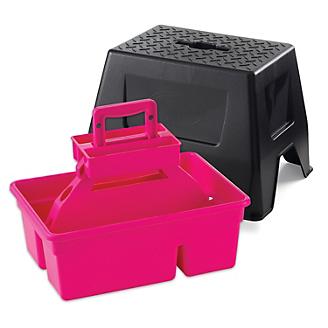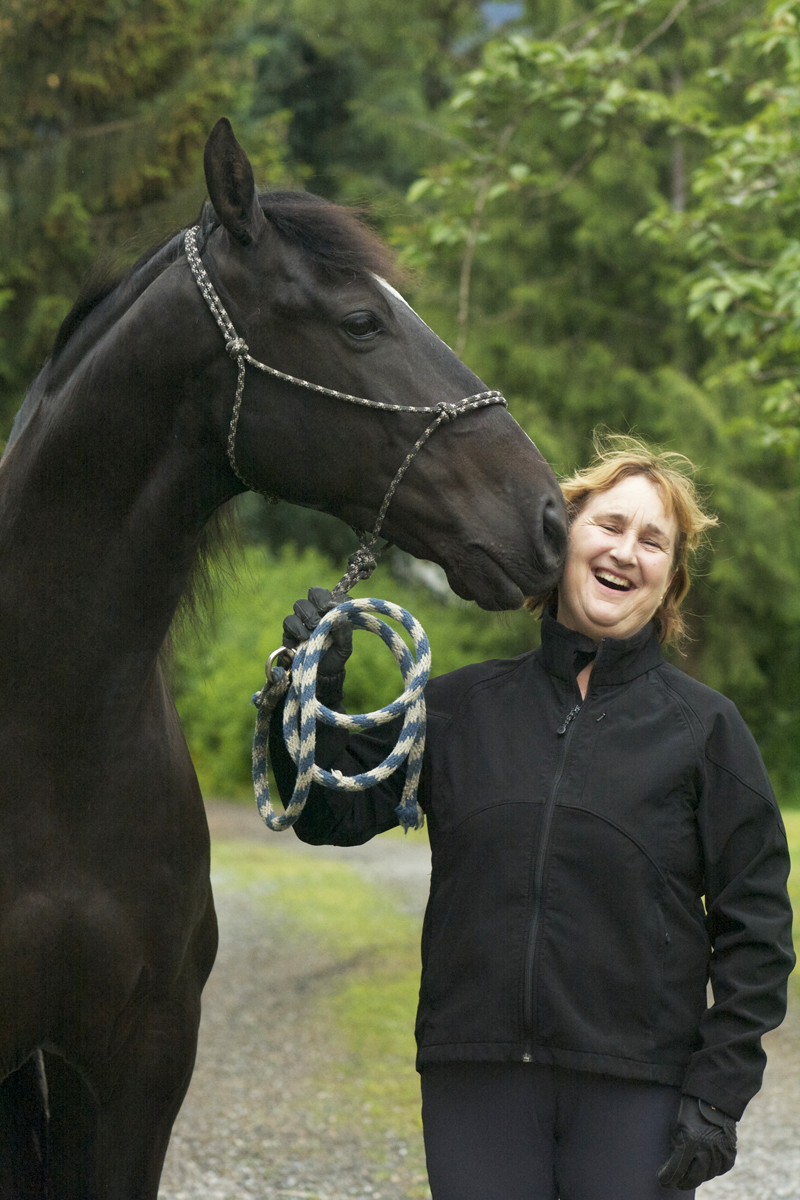The husband of one of my best friends often calls me before Christmas or his wife’s birthday and asks, “Is there anything she needs for her horse?”
This man’s thoughtfulness reminds me that our significant others don’t always know what we horse people need or want for our horses. Also, people new to horse ownership might benefit from a list of must-haves for daily horse care.
 The following is a list of my favorite horse care items—things I use every day. They’re the most essential tools I use to keep horses healthy and make caring for them easier. Some are inexpensive stocking stuffers and others are big ticket items that make a special gift. Decades in the horse business have led me to believe none of these are frivolous. They’re listed from least expensive to more costly.
The following is a list of my favorite horse care items—things I use every day. They’re the most essential tools I use to keep horses healthy and make caring for them easier. Some are inexpensive stocking stuffers and others are big ticket items that make a special gift. Decades in the horse business have led me to believe none of these are frivolous. They’re listed from least expensive to more costly.
- Rubber curry. This is the first thing used when grooming a horse. It massages the muscles and brings dirt to the surface to be brushed off with a body brush. Purchase those that are oval, flexible (not rigid) and sized for the user’s hand.
- Hoof pick with a brush. Hoof picks come in many colors, shapes, and sizes but the kind with a brush attached is excellent for cleaning deep into the crevices of the frog and bars. This is especially important before using any topical such as sole hardener or thrush medication.
- Mane and tail combs (wide and narrow teeth). Inexpensive and tend to break easily so have an extra one or two on hand. The wide ones help pick through and comb out a tangled mane or tail. The narrow-toothed ones are perfect for parting the hair for braiding.
- Bot knife or block. A late summer/early fall essential for removing the eggs of this pesky parasite. They can also be used to remove tree pitch or other sticky stuff from horses’ coats.
- Metal curry. I’d be lost without my old fashioned, circular metal curry for cleaning my brushes after brushing my horse. Mine is many decades old. I never use it on a horse though, as the teeth are quite abrasive.
- Silicon spray for detangling tails and manes. Various brands offer hair conditioners as well. These products make the tail and mane easy to comb out, reduce breakage, and help keep them clean between washings.
- Fly spray. It can make the difference between a good ride and a bad one.
- A must-have item in your brush box. I have large, tiny, and blunt nosed medical ones. Use them for opening bales of hay, shortening tails and manes, removing stitches, and cutting bandages and vet wrap.
- Body brushes. At least three: firm, medium and very soft. Firm for removing mud and scurf, medium for cleaning all over body and legs, and very soft for the face, ears, and other sensitive spots. Be sure they fit the user’s hand size. Brushes range in price depending on quality and workmanship. I have some that have lasted decades of regular use.
- Grooming box that doubles as a mounting block. Mine goes with me when I load the horse trailer. It holds all the aforementioned supplies, has separate spaces and drawers for organizing, and is sturdy enough to mount from, sit on, stand on to clip, braid, or groom those tall horses’ faces. These can be purchased at many tack stores or check the toolbox section at the hardware store.
- A soft, well-made leather or padded break-away web halter. You need this for when your horse’s comfort and safety are in peril. Please don’t haul, turn out, or tie horses in a rope halter.
- First aid kit. Many veterinarians and veterinary supply stores offer these pre-made. Talk to your veterinarian about emergency medicines and drugs to have on hand and keep them up to date. Make sure your first aid kit is in the horse trailer before you haul.
- Clippers. Some horse people may feel they don’t need this if they don’t show, but being able to clip around a wound or swollen tendon, or reduce winter fuzz on a bridle path can make this an indispensable tool.
- Fleece cooler. These are very handy on cold, damp, winter days—both pre-ride to warm your horse and after riding to keep a sweaty horse from getting chilled. I like to let my horses lounge in ears-to-tail fleece coolers in their stall after a ride. Then I can return a dry horse to his “normal” blankets (or naked state) once dry. It’s very important to not put a wet horse back into a rain sheet or stable blanket as the horse can become chilled, sweaty, or develop skin conditions. If you haul out, hauling in the cooler both warms the horse on the way and dries the horse on the trip home.
See this article in the 2020 November online edition:

Kim Roe grew up riding on the family ranch and competed in Western rail classes, trail horse, reining, working cow, and hunter/jumper. She trained her first horse for money at 12 years old, starting a pony for a neighbor.
Kim has been a professional dressage instructor in Washington state for over 30 years, training hundreds of horses and students through the levels. In recent years Kim has become involved in Working Equitation and is a small ‘r’ Working Equitation judge with WE United.
Kim is the editor of the Northwest Horse Source Magazine, and also a writer, photographer, and poet. She owns and manages Blue Gate Farm in Deming, Washington where she continues to be passionate about helping horses and riders in many disciplines.

